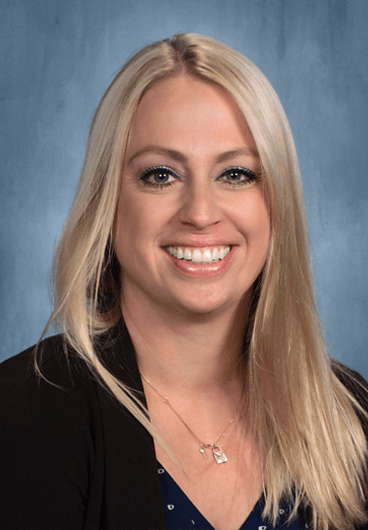
Megan Park
Gannett Peak Elementary School
Lander, Wyoming
mpark@landerschools.org
Best Practices
1) Teacher and Staff Development: A best practice that has worked well at Gannett Peak Elementary (GPE) lies within teacher and staff development. Specifically, GPE operates under the umbrella of a Professional Learning Community (PLC). This foundation fosters a culture of continuous growth and collaboration, ultimately benefitting students, educators, and the school as a whole. The PLC process at GPE is one of the cornerstones of the school’s success. It serves as a structured and ongoing platform for teachers to collaborate, reflect, and engage in collective learning experiences. At the core of our school’s collaborative processes is the belief that every student can succeed and that teachers are the primary drivers of this success. This is reflected in our mission statement, “Every Cougar, Every Day.” Collaborative teams meet at least twice a week to discuss data, student performance, and pedagogical practices. These meetings are not just about sharing information but also about mutual support and shared accountability. Teachers come together to analyze student achievement data, identify trends, and explore strategies to address learning gaps; the data-driven approach enables our teacher teams to make informed decisions about instructional methods and curricular adjustments.
Our district, Fremont County School District #1, has invested several years of effort and a significant amount of professional development monies to ensure that teachers have the experiences of understanding PLC work by attending Solution Tree’s “PLC at Work” conferences, structured around their core publication, Learning By Doing. A key element of GPE’s success in using the PLC structure is the commitment to distributed leadership. The GPE guiding coalition team, a group of teacher leader representatives from various grade levels and departments plays a pivotal role in ensuring that decision-making and PLC work are driven by the collective wisdom of the school community. This diverse group spearheads various initiatives and professional development activities, ensuring that they align with the school’s mission and objectives. For example, at current time the guiding coalition has taken on the work of revisiting and leading the larger school community in setting collective commitments. It has been inspiring to watch the grassroots efforts of the GPE guiding coalition as they build shared understanding around what we want for all teachers and students in the school community and translate it into actionable steps. Moreover, this commitment to shared leadership encourages a sense of ownership and responsibility among staff members. Teachers are not just passive participants; they are actively engaged in shaping the school’s future. This had led to a higher level of motivation, morale, and job satisfaction among the staff, as they see their ideas and feedback contributing to real changes. It is my belief that the current state of the PLC process at GPE is such that it would continue to thrive, even if there was a complete change in leadership. In my mind, this is a reflection of our teacher and staff development’s success.
2) Student Assessments: Another best practice that has worked well in our school is the use of meaningful student data assessments; specifically, assessments being employed to guide data-based decision making related to academic interventions is of a particularly high caliber at GPE. Effective student assessment is crucial in ensuring that all students receive the support they need to succeed. At GPE, a robust system of students assessments are employed to provide meaningful insights into student learning. In addition to standards-based assessments tied to curricular resources (and aligned with grade reporting), the student assessment package for academics at GPR includes norm-referenced screeners, diagnostics for students flagged under the 40th percentile, and systematic progress monitoring/data review by PLC teams, using the MTSS structure. Norm-referenced academic screeners are the first line to identify students who may need additional support. GPE administers the STAR assessment to students in the fall, winter, and spring each school year. Additionally, all kindergarten students are screened with the PEARL Dyslexia Screener in the fall. Screener results help our teams identify students who may be struggling academically, ensuring that further diagnostic data can be administered such that timely interventions can be implements. Diagnostic assessments are more comprehensive and are used to pinpoint areas of difficulty. For students flagged below the 40th percentile, diagnostics become indispensable for creating individualized learning plans. Measures are selected by the GPE team and are dependent upon the scores from screening data and grade levels. The most regularly used diagnostics and intervention placement measures at GPE include Story Champs, 95 percent Phonological Awareness Screener (PASI); 95 percent Phonic Screener for Intervention (PSI); S.P.I.R.E; Fundations; Bridges Intervention; and Acadience Math Benchmarks.
Diagnostic measures help determine initial placements for students in academic interventions, but it is critical that data from assessment measures continue to guide academic planning in response to student needs. Progress monitoring is an on-going process that assesses whether interventions are effective and whether students are making the expected progress. Systematic three-week cycles are used across K-3 to intervene, gather data on students’ performance, and adjust interventions accordingly. GPE utilizes probes aligned with intervention curricula in addition to curriculum-based measurements. This gives a picture of progress both within curricular programs, as well as generalized application of learning in relation to grade level expectations. Progress monitoring data is reviewed at the end of each three-week cycle during MTSS meetings with grade level teachers, Title 1 intervention teachers, special education teachers, and administration at the table.
Finally, it is worth noting that the PLC model has served as the ideal platform for implementing and responding to meaningful student assessments. It fosters a culture of collaboration and data-driven decision-making among educators. GPE teachers are sharing best practices, learning from one another’s experiences, and creating a unified approach to student assessment. The MTSS and PLC structures not only strengthen the assessment process, but also more effectively ensure that every GPE student’s unique needs are addressed appropriately.


